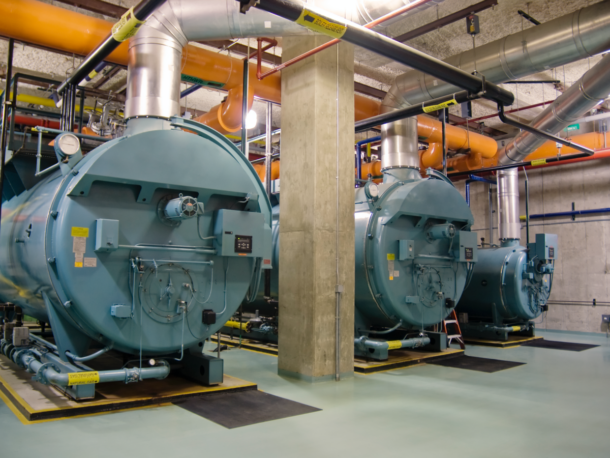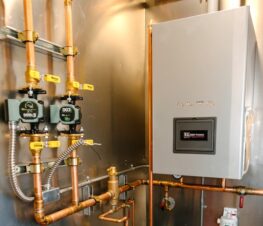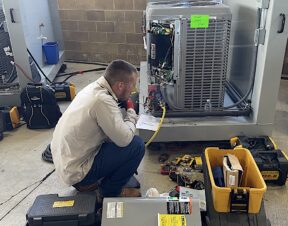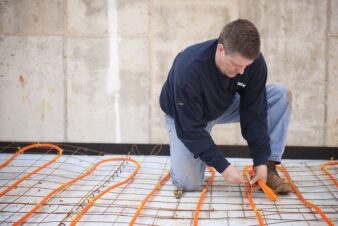Fired equipment is an essential part of many industries, providing heat and energy to a range of operations and processes. From furnaces to boilers, and from kilns to ovens, these pieces of equipment are invaluable in many applications. With an ever-growing variety of fired equipment available, it can be difficult to keep up with all the different types and uses. Everything from transportation to manufacturing, food production, and more, can be aided by fired equipment. Whether looking for information on a specific piece of equipment or just curious about the options available, this guide provides a great starting point.
Furnace
The most common example of fired equipment is a furnace. A furnace is a device used to raise the temperature of a material. It heats a container that can hold the material and then transfers its heat via conduction and convection. The furnace is typically an insulated structure that contains a heat source, and may also contain a means of controlling the rate of heat production. Many industrial furnaces are also equipped with flow-control mechanisms and/or temperature sensors for continuous, automated operation. Furnaces can be used to produce many different products, such as silicon for solar panels, iron and steel for construction, and chemicals for drugs and other products. Many types of furnaces exist, each suited to a particular type or range of materials. A common example of an industrial furnace is the electric arc furnace, which is used for processing steel. In a residence, the term furnace may refer to any heating device, or to a central heating system that produces heat via a furnace or boiler.

Boiler
A boiler is a closed vessel that uses water as a solvent to transfer heat energy to another system. The steam generated as a by-product can then be used to power turbines and can be used in many ways — as a source of thermal energy, as a source of power, and as a source of clean water. Traditionally, the boiler was used to generate steam to be used in a steam engine. Modern-day boilers are fired by natural gas, fuel oil, or coal, to produce pressurized steam. This steam can then be used to power turbines to generate electricity or to generate mechanical energy through a steam-powered actuator. Boilers are commonly found in central heating systems, industrial processes, and other applications that require high-temperature or high-pressure water. For example, the water used for semiconductor wafer processing, hydroelectric power generation, and nuclear power generation all must be extremely pure. In these applications, boilers produce steam that is then sent to a steam turbine to spin a set of turbines that pressurizes the water to be used as a solvent in other applications.
Kiln
A kiln is a device used for controlled heat treatment, generally used for industrial ceramics or pottery production. In ceramics, a kiln is often used to slowly increase the temperature of a piece of unfired ceramic ware to the point at which it reaches its volumetric transformation temperature. At this point, the ceramic piece is porous and thus finished. In pottery, a kiln is used for a wide variety of ceramics, including stoneware and earthenware. The firing temperature, time, and atmosphere of the kiln will control the color and other properties of the ceramic. In addition to ceramics, kilns are also used in other industries, such as cement production and metal sintering. For example, cement is produced by heating limestone, clay, and sand at very high temperatures to create a solid material.
Oven
An oven is a device that uses controlled heat to cook food. This includes both wood-fired ovens and brick ovens, which are commonly found in restaurants. While most ovens are used in commercial food production, they can also be used in the home. In a household environment, an oven may be used to bake, broil, roast, or even keep food warm. These ovens are often fueled by electricity, natural gas, or propane. Ovens are often insulated to keep the heat inside and operate for long periods of time. In addition to baked goods, ovens can be used to heat up food items quickly and conveniently.
Incinerator
An incinerator is a device that burns waste to reduce volume and eliminate contaminants. It can be designed to handle all types of waste, including municipal solid waste, hazardous waste, and medical waste. Incineration is among the oldest methods of municipal solid waste disposal. In modern times, incineration has become increasingly common as a method of managing wastes that cannot be reduced in volume by other methods, such as composting or municipal sewage sludge treatment. The incinerator can be used to produce electricity by burning a fuel source such as natural gas or biofuels. Energy production is often an additional feature of incinerators that are used in municipal waste disposal. The incinerator can be used to produce high temperatures, which are ideal for smelting and other processes.
Drying Oven
A drying oven is a device that is used to remove water from materials. A drying oven can be used to produce different goods, such as plant extract, sugar, or feedstock for the production of biofuels. Drying ovens are also used in many industries, like in the timber industry to dry timber with low humidity and in the baking industry to dry and cook products at high temperatures. A drying oven generally consists of an insulated furnace with a rotating roof and a rotating floor. Ovens are used in many industries and can be operated manually or with automatic controls. In the food industry, drying ovens are often used to dry fruits and vegetables, including dehydrating apples to make applesauce or carrots to make carrot powder.
Heat Exchanger
A heat exchanger is a device that transfers heat between a pair of fluids that are flowing through it. A common example of a heat exchanger is a radiator used to cool a car engine. In this example, cold water is run through the radiator, and the radiator transfers some of its heat to the water. The water is then run through the engine, where it is used to cool the engine. A heat exchanger can be made of a variety of materials, but it is often made of metal, such as copper or steel. A heat exchanger is often used in conjunction with a pump and a cooling tower to transfer heat between two fluids. Heat exchangers are used in many different industries, such as in chemical plants, oil and gas refineries, and food and beverage processing plants.
Calciner
A calciner is a device that is used to transform materials by heating the materials in a reducing atmosphere. This process is often used for the production of materials such as cement, lime, and phosphate fertilizers. Calcination can also be used for other applications, for example in the roasting of coffee beans. Calcining is a type of thermal processing that is used to change the composition of a material by increasing its temperature. This process can be achieved through a variety of methods, including the use of an electric arc furnace or a rotary kiln.
Pyrolysis Equipment
A pyrolysis process is a thermochemical decomposition of organic material in absence of oxygen. It produces a liquid, a gas, and solid organic material. This process is used to convert waste to fuel. Pyrolysis allows the process to be done in a controlled environment, which means that the waste does not need to be exposed to the air or the environment. Pyrolysis equipment consists of a reactor or a furnace that is heated to a high temperature to burn or decompose the waste material. The heat is used to break down the waste into synthetic crude oil, also known as pyrolysis oil, bio-oil, or bio-crude. This process can be applied to many different types of waste materials.
Conclusion
The term “fired equipment” encompasses a wide array of systems and appliances, all used in many different ways. Fired equipment is commonly used in production and manufacturing industries, but examples can also be found in most homes. With the help of this guide, you have now been introduced to 10 common examples of fired equipment as well as the characteristics and potential uses of each.




Join the conversation: